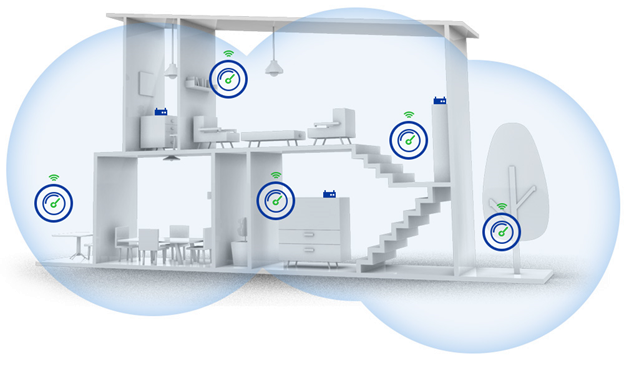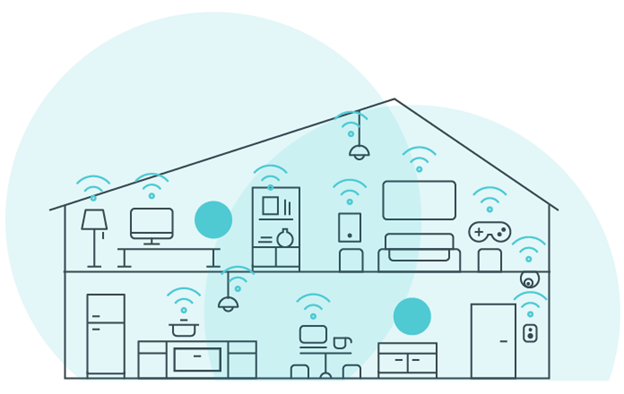What is a Mesh Network?
Estimated Reading Time: 2 Minutes

A mesh network is a network in which devices -- or nodes -- are linked together, branching off other devices or nodes. These networks are set up to efficiently route data between devices and clients. A mesh network will contain a group of devices that act as a single Wi-Fi network. This provides multiple sources of Wi-Fi around your house, instead of just a single router.
In a traditional Wi-Fi network, your phone or laptop is connected to a single router, and all communication passes through that single router. The farther you are from the router, the weaker the signal. However, for a mesh network, there will be multiple WiFi points in your house, so you will never be far from one. This will allow more stability and flexibility in your WiFI coverage.
How Does it Work?

Mesh WiFi or Whole Home WiFi systems consists of a main router that connects directly to your modem, and a series of satellite modules, or nodes, placed around your house for full WiFi coverage. They are all part of a single wireless network and share the same SSID and password, unlike traditional WiFi routers.
Mesh networks use routing or flooding techniques to send messages. In routing, a message hops from node to node to get to its destination. The mesh network, on the other hand, have continuous connections and reconfigure itself if a path is broken, using self-healing algorithms. There will often be more than one path between a source and a destination.
Pros and Cons of a Mesh Network
Pros
Mesh networks include the following benefits:
-
Increased stability – In a mesh network, if one point goes down, communication is simply rerouted through another point.
-
Flexible coverage: Additional points can be added to get better coverage in hard-to-cover areas like hallways and near walls for outdoor coverage.
-
Direct communication. Nodes can message each other directly. There is no need for intervention from a central access point.
Cons
Mesh networks come with some drawbacks. For example, these include:
-
Cost. A single router and Wi-Fi range extenders can make for a more cost-efficient network. Individual nodes also won’t cover the same range that a wireless router and range extender would. This means more nodes are needed in a mesh network.
-
Complexity. Each node must send messages and act as a router. The more intricate a mesh network becomes, the more difficult it can be to manage or troubleshoot all the nodes.
-
Scalability. Scaling the size of the network may be more difficult depending on the number of nodes needed.
You will need to consider how you are going to use your Wi-Fi and the cost in order to determine what fits for you. Traditional Wi-Fi is recommended for users on a smaller budget and in smaller spaces. However, if a larger area needs to be covered, and cost is not a factor, then a mesh network is worth considering.
